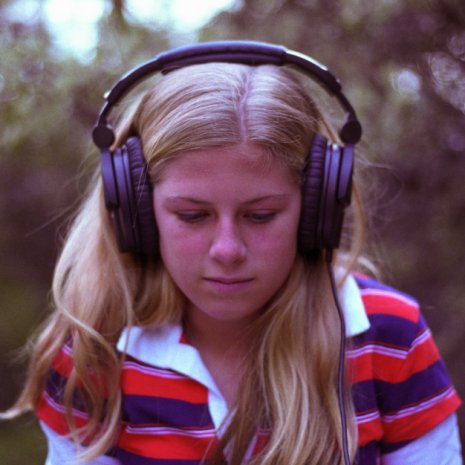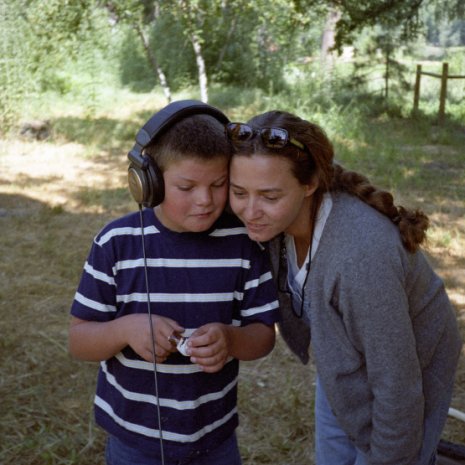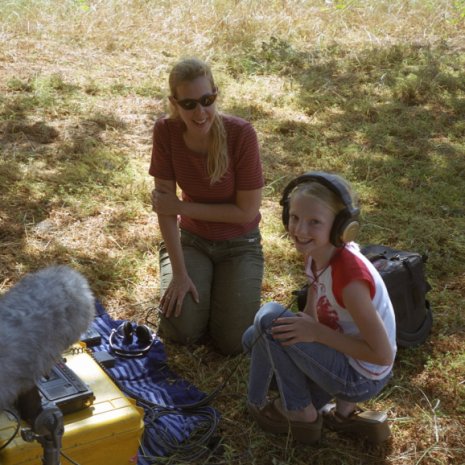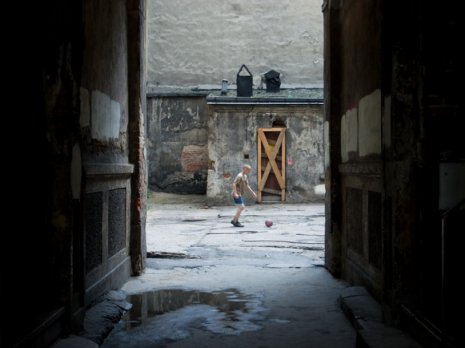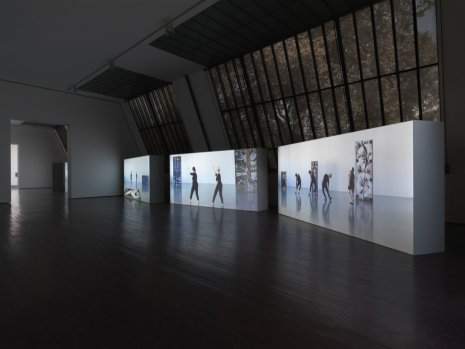Chapter Two
LCT:
Sharon, you have both worked in the US, where you were born and grew up, and also among cultures that were, at least initially, quite foreign to you — Japan, Brazil, Israel, Poland… What have been the challenges of working at home, and also abroad? Which of your cross-cultural projects were commissions, and which derived from your own interests and motivations? What changed for you when you came home, and made the film and photographs that are “Pine Flat?”
SL:
As your question suggests, the challenges of working at home are maybe more interesting than those of working abroad. The problems of working outside your home culture are well documented and heavily theorized. For example, there is the age-old question of preconceptions and hierarchies that is always raised when Americans or Europeans look at other cultures. Edward Said’s critique of orientalism is just one example of the wider genre of Post-colonialism. There are also just practical problems that arise when working outside your home culture such as issues of communication and cultural misunderstandings as well as the difficulties that arise because people are trepidatious about granting outsiders access. Maybe the surprising thing is that I feel I faced some of the same issues working in the United States. When I am working on a film, a large portion of my time is spent gaining access to a community. The first part of this project is finding the people and place I’d like to work with. While a general permission is the common next step, my projects involve the total buy-in of the participants. This involves creating a group culture where the subjects can feel comfortable enough to reveal themselves. Generating this culture is the most enjoyable part of the project for me but it is always a difficult and deeply personal process. There are also the typical ethical questions of how the documentary process can effect those who participate both as objects of the camera and as participants in a process. Since I work very hard to create a collaborative feeling of trust among my subjects, I worry a lot about how they are perceived and treated by the outside world that I’m obliged to bring into their lives by my activity. This can range from something very immediate, like the film crew, to something more distant, like the audience that ultimately receives the film. The closer I am to the subjects of the film, the more protective I feel so I would say this is probably more pronounced when I’m at home.
I would say that all of my projects were derived from my own interests and motivations. On the few occasions where I was commissioned to do something, like “Pódworka” or the Eshkol project, it was always an option to opt out if I couldn’t find something I wanted to do. I feel there is always something interesting out there and the things that I end up looking at are always going to be some combination of my own interests and the things I end up in front of for whatever reason. In the cases I just mentioned, for instance, I found something that struck me after spending several days looking around for something. In the case of “Pódworka” I spent about a week looking at the city in general, the site of the exhibition, various historical sites in the city, and a former school among other things. As I thought through all of the stuff I looked at I noticed the children in all of the courtyards and I came up with the plan for the film. It seemed to me to encapsulate something about that city’s architecture and culture. In the case of Eshkol, I was invited to Israel by the Jewish Federation’s Los Angeles/Tel Aviv Partnership. Again, I spent a week looking around Israel. We went to see a school, the textile collection of the Israel Museum and its conservation department, a Kibbutz art museum, the Batsheva dance company, among other things. Our contact there said, “you might be interested in my friends at the Eshkol Foundation.” In both cases, I found an aspect of the place that captured my attention. I would never have thought of going to Poland in the first place, for instance, but once there I found it so fascinating that I’ve returned again and again.
On the other hand, Maine became the venue for my “Lunch Break” project because it seemed manageable and I knew it would be easier to approach people if I were somewhat of a local. It really could have taken place anywhere since the issues and visual ingredients are present everywhere. I think the expanded project, including “Exit” and “Double Tide,” as well as the shots I never used, was ultimately very expressive of that particular location and the people that inhabit it. However, work and the issues of labor, leisure, architecture and landscape are present everywhere.
After my first few big projects abroad, coming back to the US for “Pine Flat” made me realize that the issues that I dealt with abroad were just as much a part of working in the U.S. I was able to see the United States in a more detached way because I had engaged with those cultures. Maybe detached is the wrong word. I think I found it easier to work in places outside of the U.S. because I quickly realized I was starting from zero. To engage, I had to find the aspects of the culture that somehow formed a common bond between us. Coming back to the U.S. I realized I had to reach a similar position of commonality without the preconceptions that are so hard to leave behind in your own back yard.
LCT:
Your work is often highly collaborative. What kinds have collaboration have you undertaken, both with your subjects, with artists, and choreographers? How do you think the different forms of collaboration affect your own practice?
SL:
Filmmaking is a collaborative project at its heart. One person just can’t do everything outside of very particular situations. However, I wouldn’t want to do everything myself. It is actually the collaborative part of filmmaking that is interesting and enriching. I enjoy finding solutions that are outside of my knowledge base. In this way, I’ve worked with camera people, composers, choreographers, architects, anthropologists, editors, sound mixers, costume designers, and set builders, among others. The unique skills all of these people bring to a given creative situation are always interesting and it is great to see people engaged in something creative.
Last summer, when we did the workshop, for example, the entire production team stayed on the farm during the workshops. [In the summer of 2014 I spent a month on a farmhouse outside of Warsaw with a team of educators and creative collaborators. This was the setting for a series of workshops we conducted with a group of fifteen young women from a girls’ home nearby, in which we engaged in philosophical discussion and developed exercises to empower the authority of their own voices. This provided the basis for my latest film in progress, "Rudzienko."] Each person was coming up with solutions to the challenges we faced and finding new ways of seeing the world around them: whether it was the sound recordist listening to bugs and birds and wind through the grass, the cinematographer scouting the local landscape for potential filming locations and seeing how the light and weather changed the views, or the young artists I had invited as interns who learned how to work with the girls to bring out their creativity. I think the creative process is also what I enjoy sharing with my subjects. Everyone who was a part of the process left feeling enriched and enlivened.


